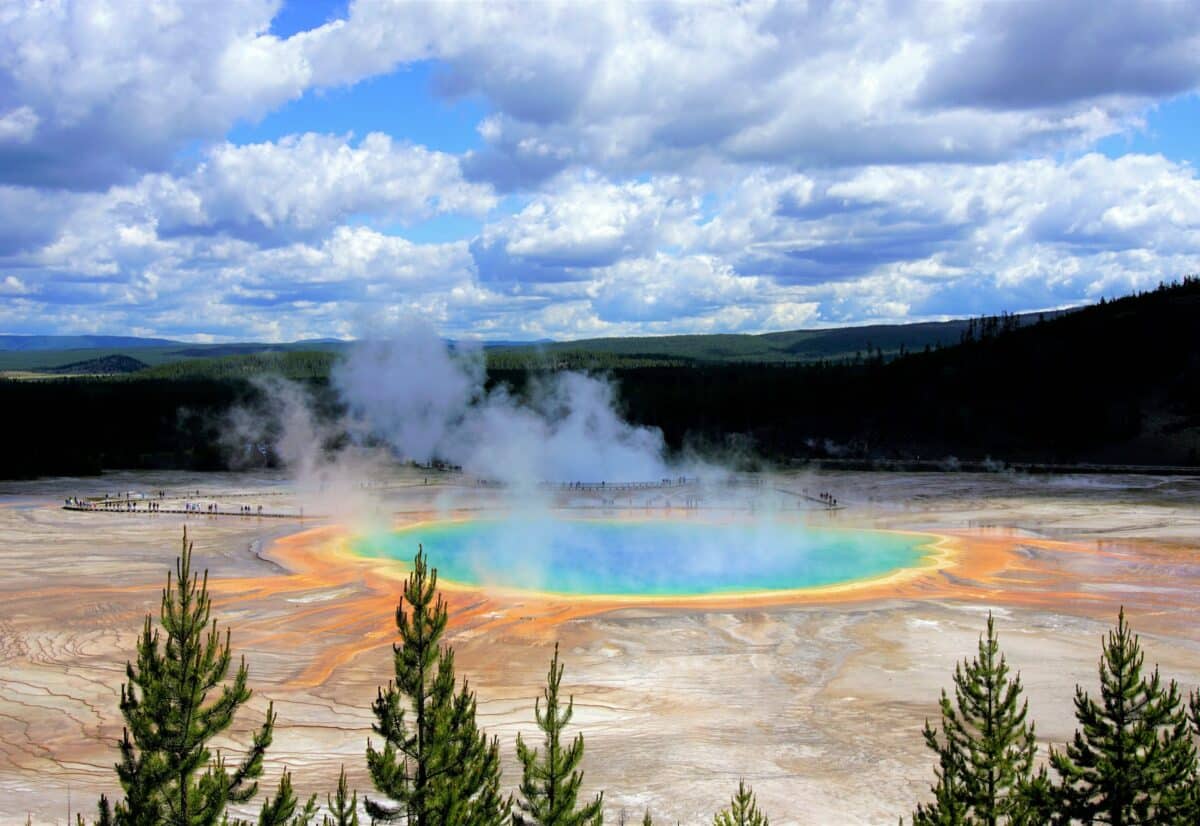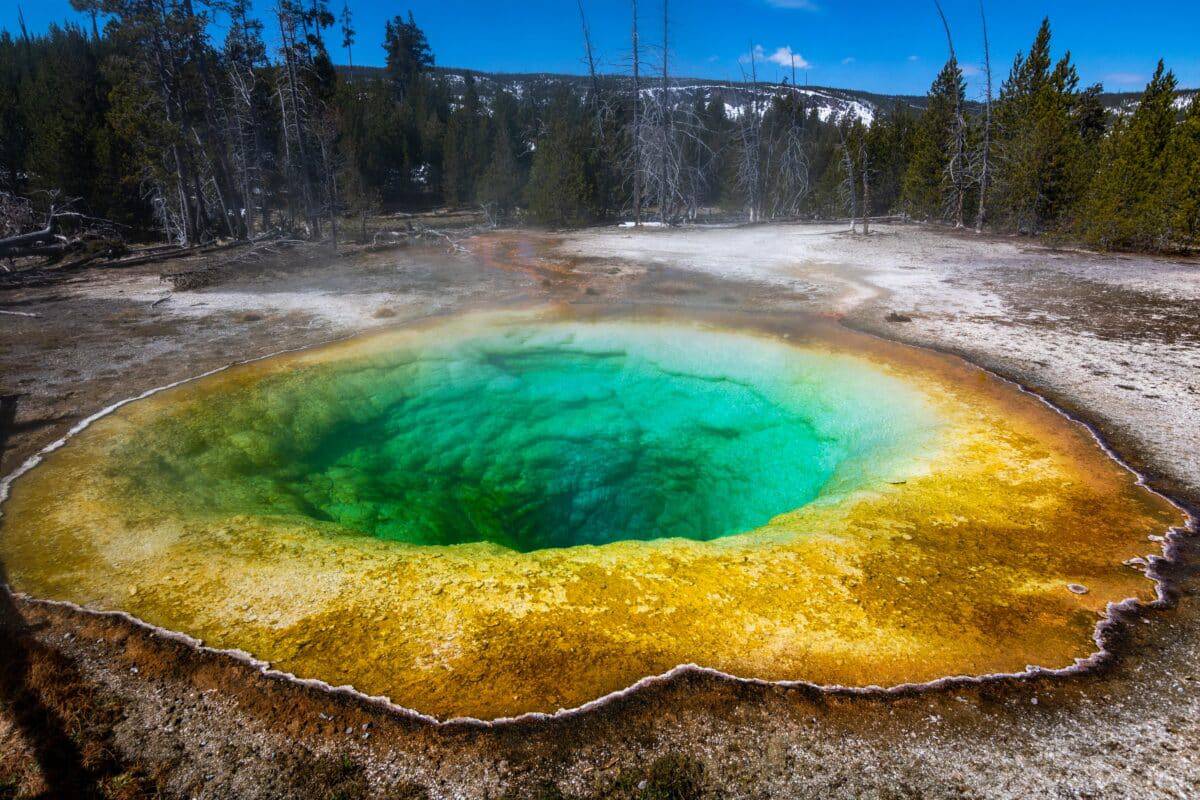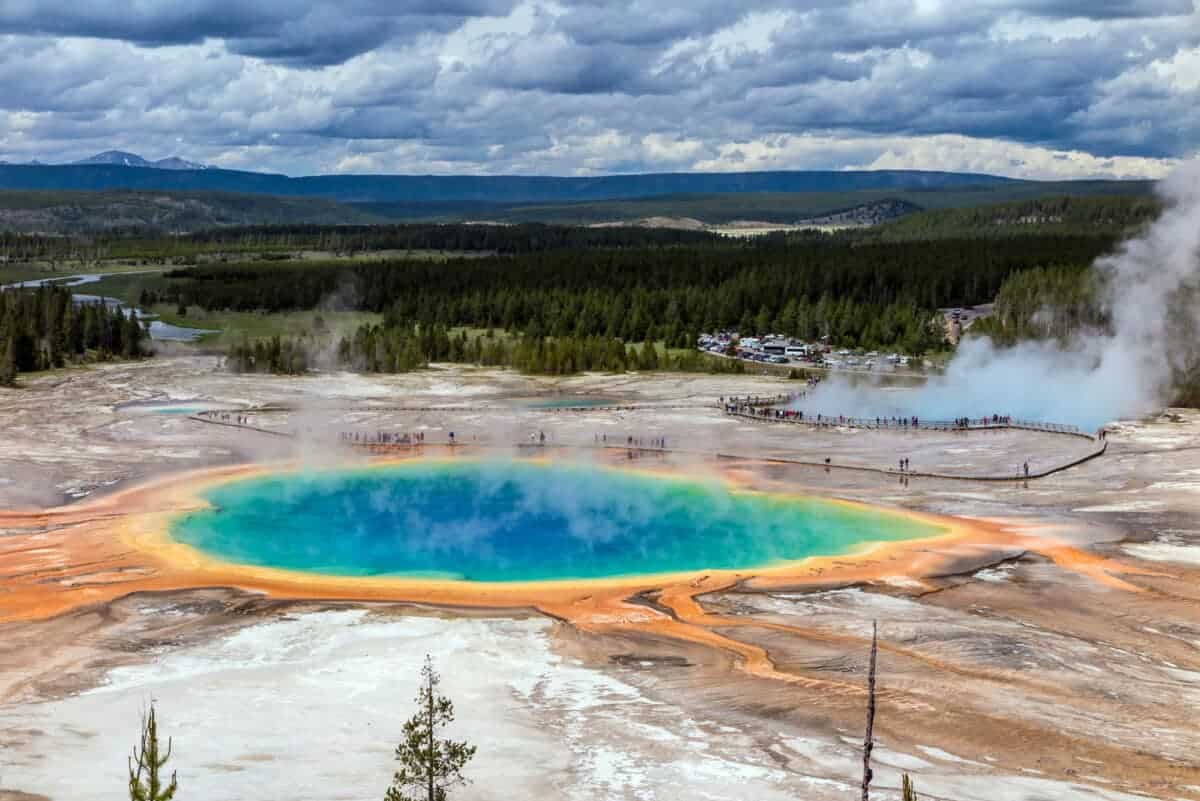The allure of Yellowstone National Park, with its diverse ecosystems and dramatic landscapes, captivates millions of visitors each year. Among its most mesmerizing features are the stunning hot springs that dot the landscape, transforming the area into a natural wonder of vivid colors and intriguing formations. However, beneath their striking beauty lies a hidden danger. Let’s explore why these hot springs are equally captivating and hazardous.
Geological Wonders of Yellowstone

Yellowstone’s hot springs are more than just picturesque attractions; they are geological marvels. The park sits atop a vast volcanic system, forming one of the largest active geothermal areas in the world. Heat from the molten rock beneath the surface warms the groundwater, causing it to rise to the surface and create these stunning thermal features. This unique environment is responsible for the vibrant colors and ethereal steam that characterize the springs.
The Science Behind the Colors

The brilliant colors of Yellowstone’s hot springs, ranging from deep blues to fiery reds, are not merely aesthetic wonders. These hues result from the presence of thermophiles, or heat-loving microorganisms, which thrive in the extreme temperatures of the springs. The distinct color gradients are determined by the types of bacteria and algae that populate different temperature zones within the springs.
The Temperature Threat

While the hot springs are mesmerizing, they are also perilously hot. Temperatures can exceed 199°F (93°C), which is more than enough to cause severe injury or even death to anyone who comes too close. The springs’ boiling temperatures are a testament to the formidable geothermal forces at play beneath Yellowstone’s surface.
The Role of Acidity

In addition to extreme heat, some of Yellowstone’s hot springs are highly acidic. Sulfuric acid, produced by the interaction of water with sulfur-rich volcanic gases, can create corrosive environments with pH levels as low as 1-2. This acidity not only allows for the survival of unique microbial life but also reinforces the springs’ potential danger to humans and animals.
Deceptively Inviting Appearances

The inviting appearance of the hot springs can easily lure unsuspecting visitors, particularly the crystal-clear waters and vibrant surroundings, which can be mistakenly perceived as safe for bathing. However, entering these waters is prohibited due to the lethal combination of extreme heat and acidity.
The Issue of Thin Crust

A significant danger in the hot spring areas is the thin crust of the earth’s surface. Many regions around the springs are covered with a fragile layer of mineral deposits, which can easily give way under the weight of an individual, leading to potential falls into scalding and acidic water below.
Wildlife Interaction with Hot Springs

Wildlife in Yellowstone is generally aware of the dangers posed by the hot springs, but there are instances where animals, particularly during harsh winters, venture too close in search of warmth. Sadly, this can result in serious injury or death for the animals, underpinning the primordial danger of these striking formations.
Historical Tragedies and Lessons Learned

Throughout its history, Yellowstone has been the site of several tragic accidents involving hot springs. These incidents highlight both the springs’ perilous nature and the critical importance of respecting park guidelines. The stories serve as sobering reminders of the need for awareness and caution when exploring geothermal features.
Safety Measures for Visitors

Park officials have implemented safety measures to protect visitors from the dangers of the hot springs. Boardwalks and clear signs guide tourists safely around these natural phenomena, providing educational insights while keeping them at a safe distance. It’s imperative for visitors to adhere strictly to these guidelines to ensure their safety and preserve the park’s delicate ecosystem.
Preservation of a Delicate Balance

Yellowstone’s hot springs are not only a beautiful sight but also a critical part of the ecosystem. The unique microorganisms present play a crucial role in the park’s biodiversity. Conservation efforts are essential to maintaining this delicate balance, underscoring the importance of responsible tourism and environmental stewardship.
The Thrill of Exploration with Caution

The appeal of Yellowstone’s hot springs lies in their raw and untamed beauty, offering an unparalleled glimpse into the power of nature. Exploring these geothermal features can be a thrilling experience as long as the inherent risks are respected and understood, ensuring a safe and enjoyable visit for current and future generations.
Conclusion: Nature’s Majestic but Perilous Display

Yellowstone’s hot springs epitomize nature’s dual capacity to captivate and caution. Their breathtaking beauty, underpinned by geological and biological wonders, makes them essential stops for any park visitor. However, these same qualities demand respect and caution, underpinning the springs’ reputation as both a stunning sight and a significant danger. By understanding the balance between admiration and awareness, visitors can safely appreciate one of nature’s most magnificent displays.
- 10 Common Chicken Behaviors and What They Mean - August 9, 2025
- 14 Creatures That Can Freeze and Thaw Back to Life - August 9, 2025
- 10 Animals That Risked Their Lives to Save Humans - August 9, 2025

